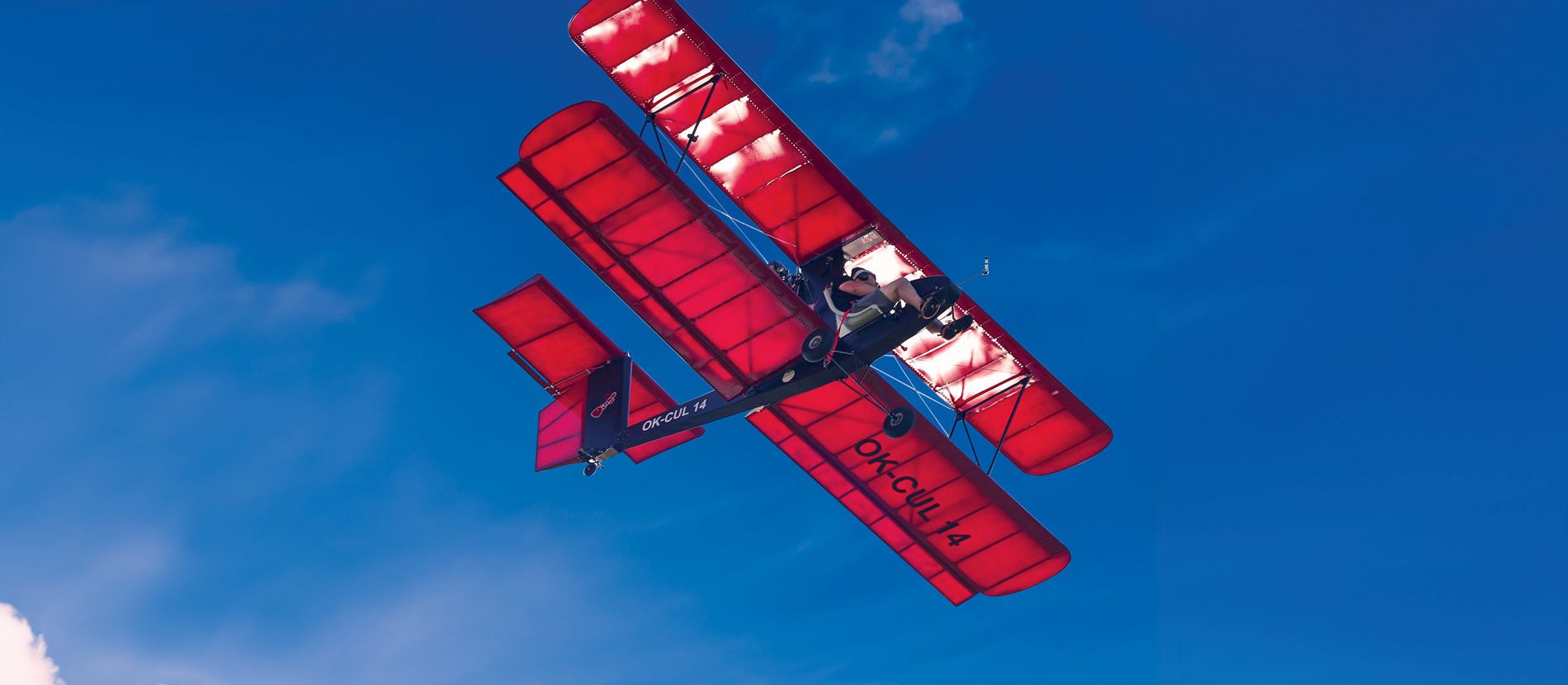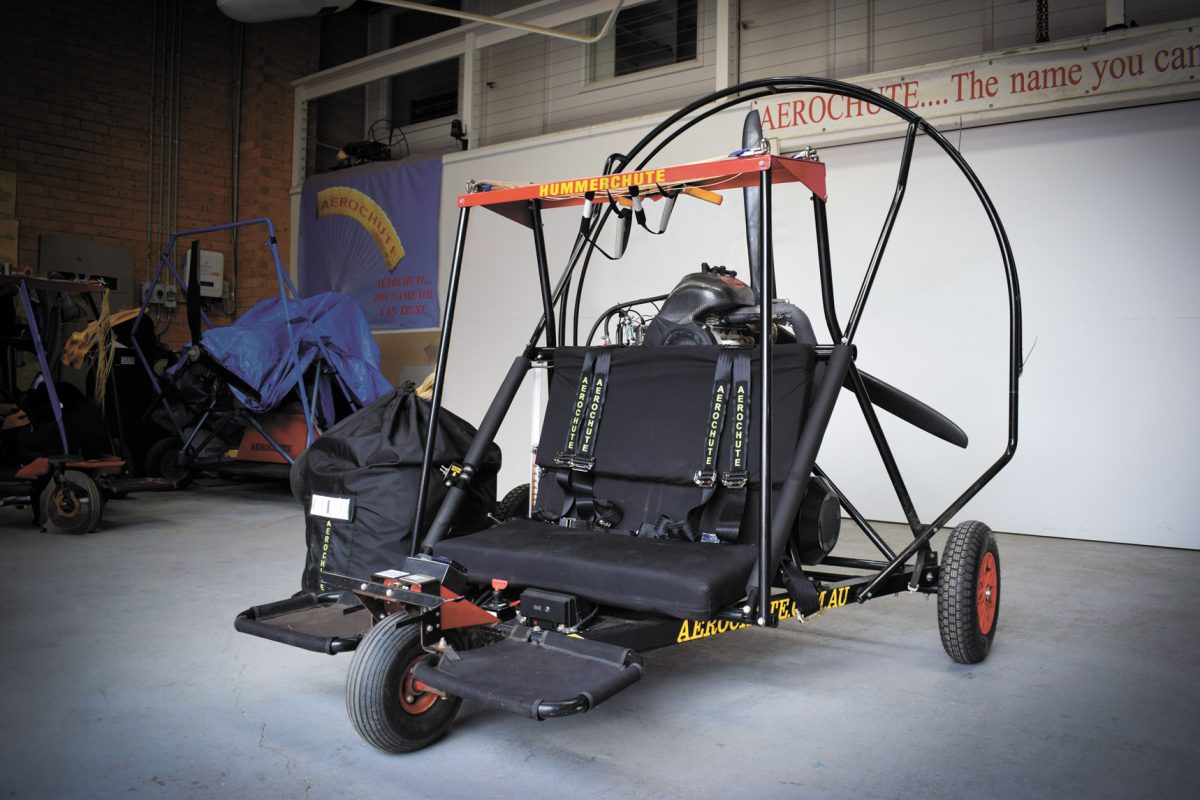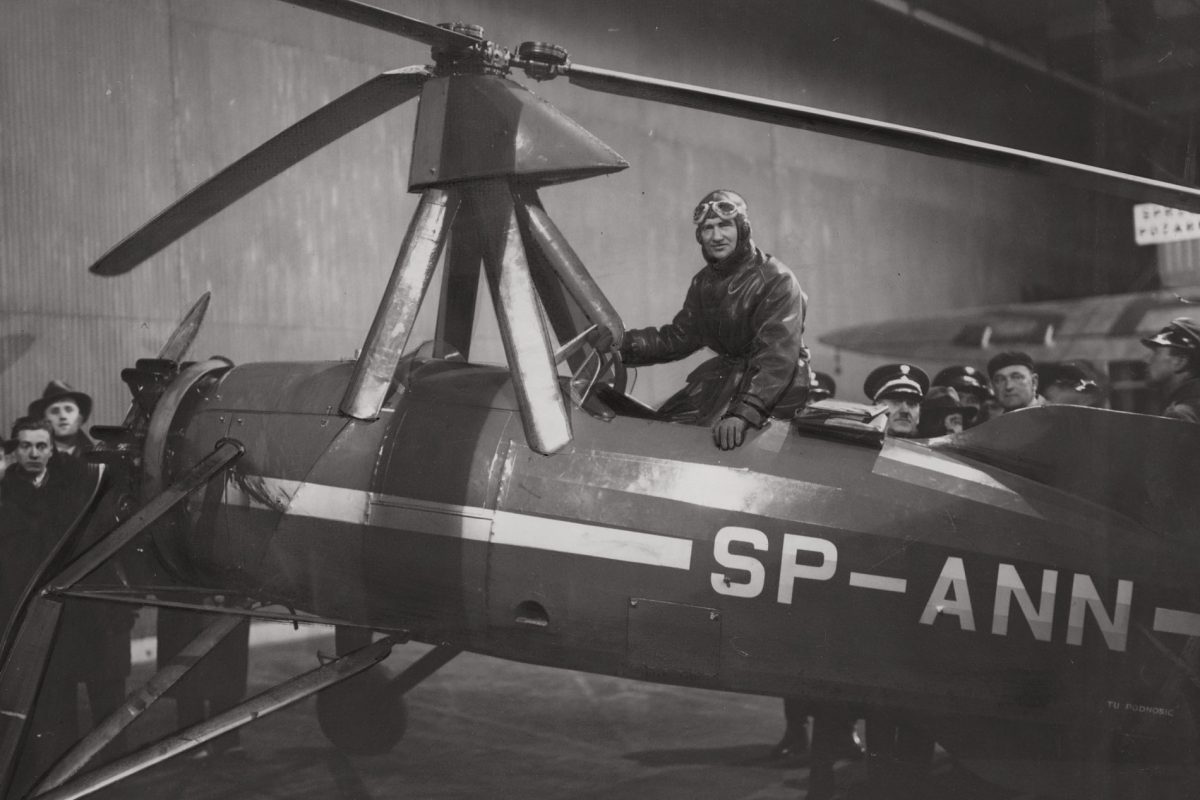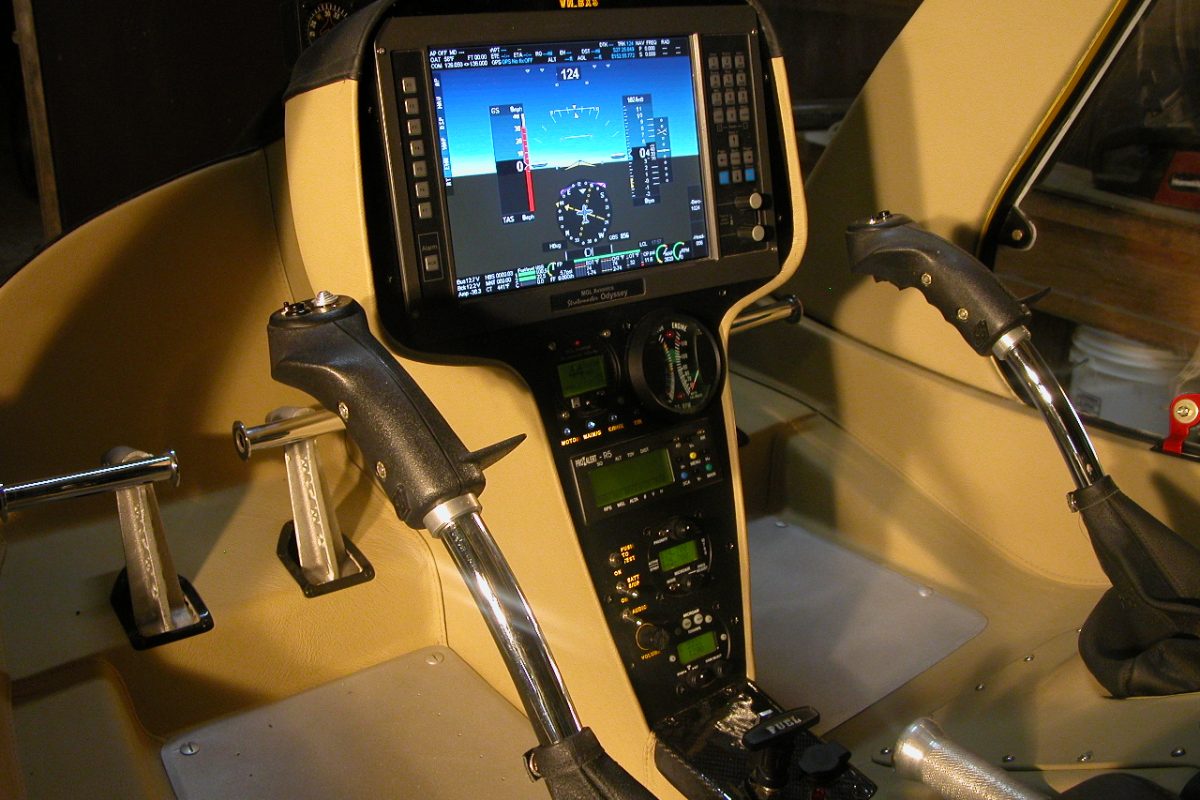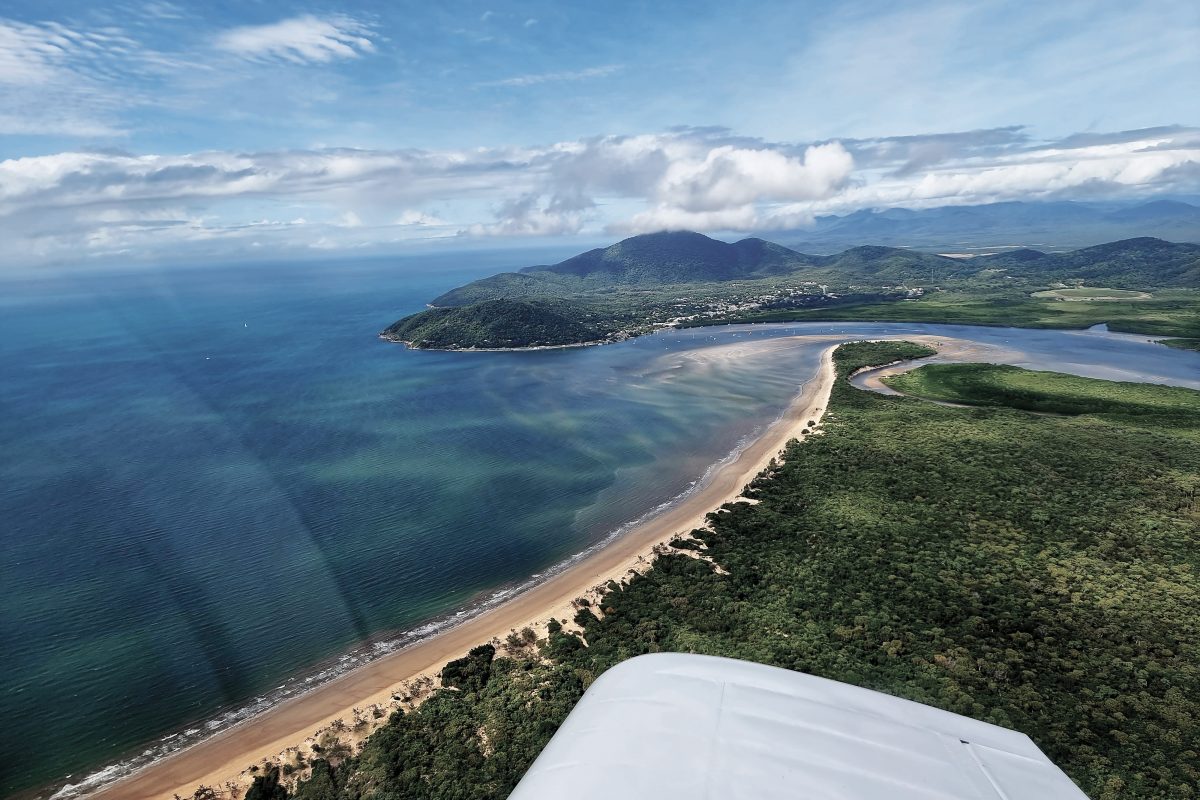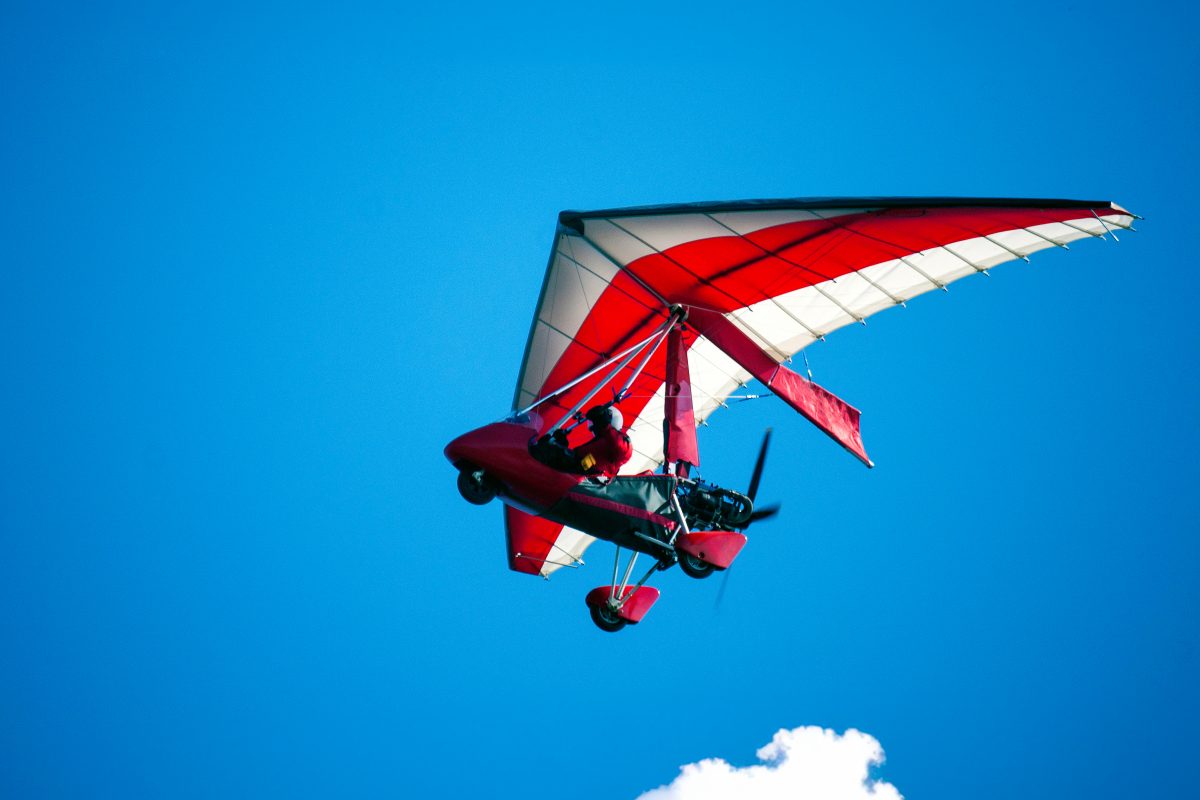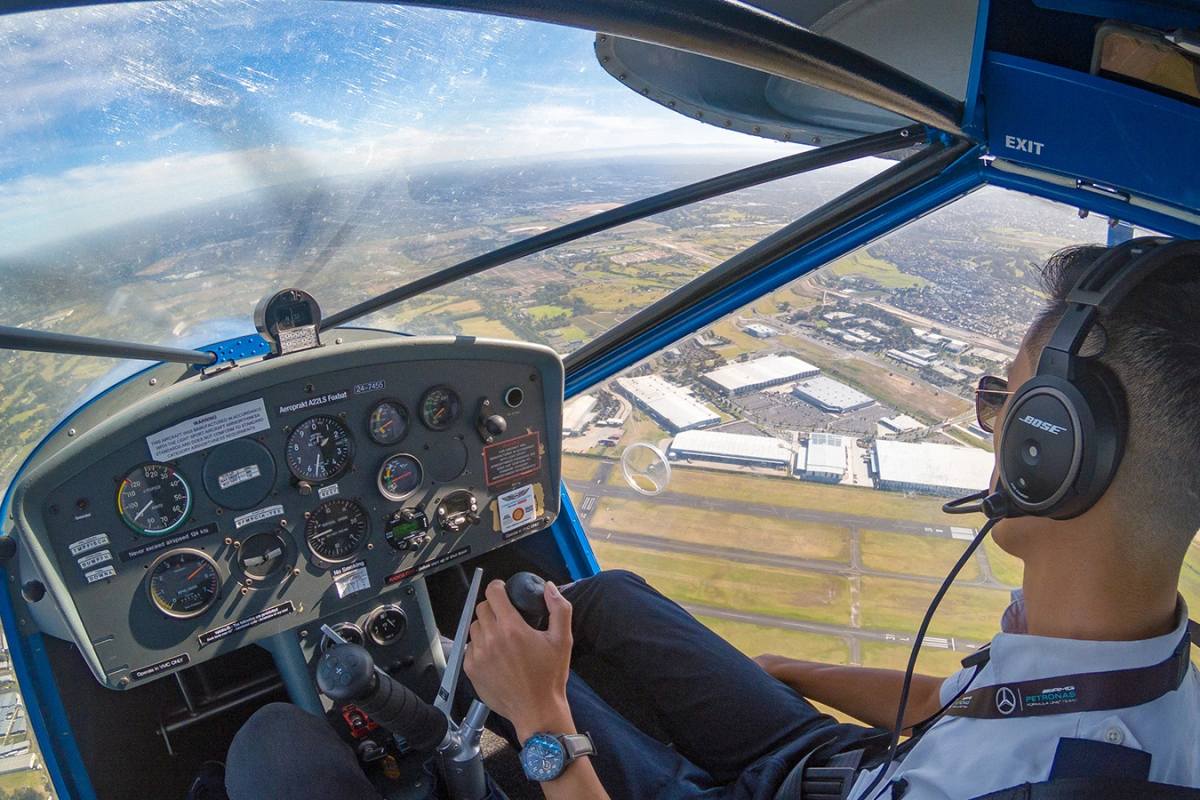The past 40 years has seen RAAus explode with innovations. In those four decades, we’ve gone from humble homebuilts buzzing about their local aerodromes to factory-engineered machines capable of fast, long-distance flight. As members, we’re often looking to push our boundaries further, as the recent MTOW increase and the
interest in MOSAIC shows. Sometimes we get so invested in this continual innovation that we forget to appreciate flying for flying. Jumping into the cockpit of this plane though, you’re guaranteed to remember.
Now here’s a plane that will turn heads. The Dingo is a single-seat, open-cockpit, pusher configuration, taildragger biplane, made by Future Vehicles s.r.o. of the Czech Republic. Designed by Marek Ivanov, the Dingo is an homage to the Hovey Whing Ding, a pioneering ultralight aircraft first flown in 1971. While the Whing Ding required pilots to brake Flintstonesstyle and was largely unable to climb out of ground effect, its spiritual successor is a fully-fledged ultralight that meets modern airworthiness standards.
The Dingo’s design process was focused on creating a plane that was easy and fast to assemble, and – most importantly – was fun to fly. With its maiden flight completed in June last year, the Dingo has now officially entered production. So, does it meet its design goals?
Supplied in kit form worldwide, the Dingo’s airframe is constructed from sheets of aluminium alloy 6061 and 2024, both commonly used throughout the aerospace industry. The wings, elevator and full-flying rudder are covered with Ceconite polyester fabric. No fancy tools? No worries. The Dingo’s sheets come pre-drilled, allowing builders to simply rivet them together. Future Vehicles puts an expected assembly time of 250-300 hours on a typical Dingo build for experienced builders. That’s a big tick in the “easy to build” box.
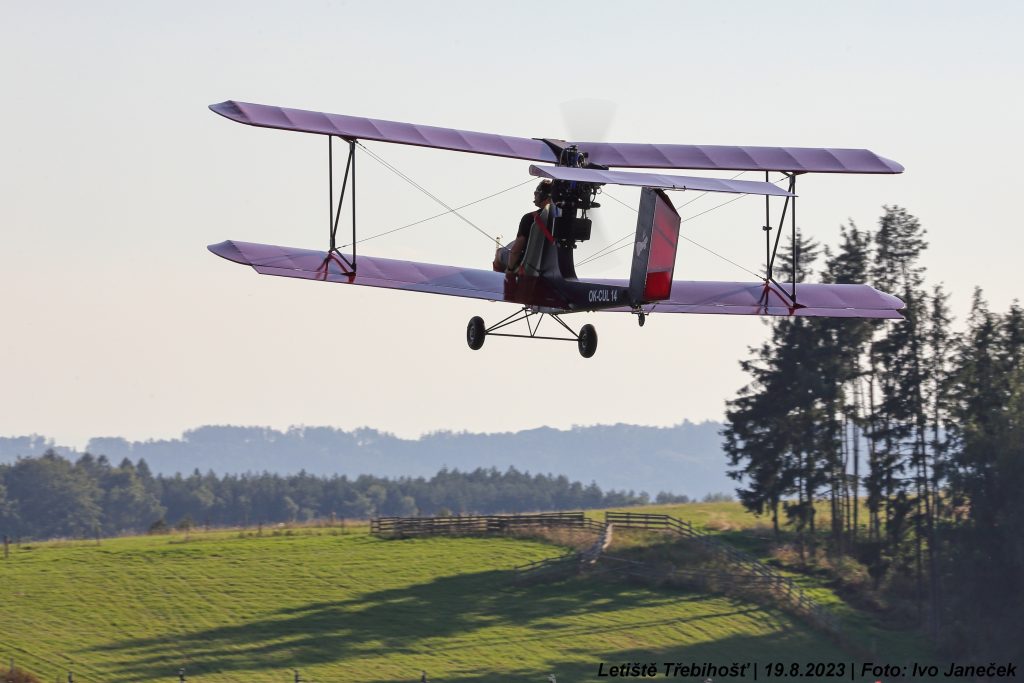
Now, “fun to fly” might be a bit of a subjective criteria to meet, but I think you’d be hard-pressed just looking at this contraption to think otherwise. The thinking behind
the original Whing Ding was to create a minimalist craft that offered the most unobstructed aerial views possible. The Dingo has achieved this as well, with its forward-mounted seat and pusher configuration engine ensuring nothing lies between pilot and open sky.
In terms of powerplant, Future Vehicles recommend one of two options for the Dingo; the air-cooled Vittorazi Moster 185, or the water-cooled Polini Thor 250 DS. Both are single-cylinder, two-stroke engines with the Vittorazi making 25HP compared to the Polini Thor’s 36HP. Both of these engines have been used extensively as paramotors, with worldwide support for parts and service. With the Vittorazi installed, the aircraft has an empty weight of 95kg, the Polini Thor makes this 105kg. With an MTOW of 220kg, you’ll have a minimum of 115kg usable weight. It’s not like you’re bringing luggage anyway.
Performance statistics vary depending on the powerplant used of course, but with the Polini Thor engine, Future Vehicles give a cruise speed of 33kts and a VNE of 54kts. Average fuel consumption is listed at 5L/h, giving you plenty of time to explore the skies on the 10L tank.
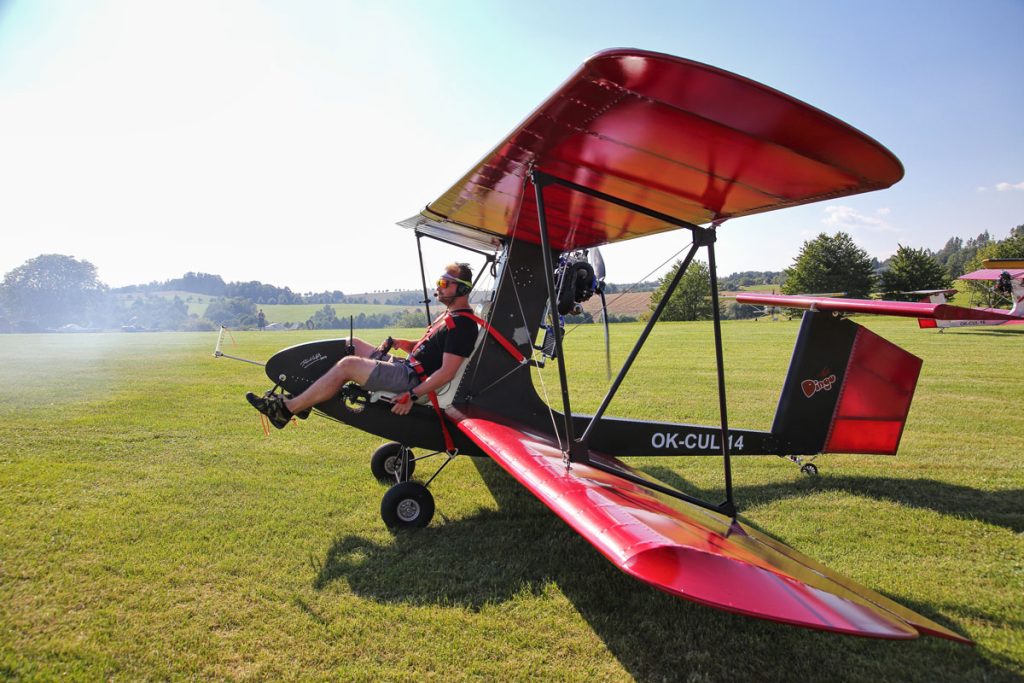
As for handling, maiden flight test pilot Jan Jilek remarked that the Dingo is “easy to fly and exhibits predictable handling characteristics”, making the art of actually piloting the aircraft nice and simple. Jilek even noted the STOL capabilities of the aircraft, saying “climbs are suitable for flying from small fields and the take-off is short. Landings are simple and, due to the overall low mass, the Dingo comes to a stop quickly.” The biplane design also lends the Dingo to more docile flight characteristics, allowing the pilot to focus more on enjoying the flight than keeping straight and level. The plane’s steerable tailwheel also makes it easy to manoeuvre on the ground.
Those are the facts, but the question remains; is it fun to fly? For pilots looking to go cross country, to travel great distances or to fly fast, the answer may well be
no. But for the pure joy of flying, for the unencumbered feeling of soaring through the sky? The Dingo is undoubtedly a definitive yes. Not many other aircraft,
even ultralights of a similar class, can offer the same flying experience that the Dingo does. For anyone looking to fly simply for the experience of flight, the
Dingo is an extremely attractive option.
Future Vehicles list the kit (excluding engine, propeller, cover material, instruments and shipping) at 12,204 EUR (AU$20,111 at time of writing), excluding tax. The company operates a “factory-direct” business model, which it says reduces delivery times and operating costs. Shipping direct from factory to Australia is listed at 2,192 EUR (AU$3,612).
The Dingo is yet to reach Australian shores. A few phone calls, and you could be flying something completely unique in Australian skies. We here at SportPilot sure hope to see these fascinating machines dotting our airspace soon enough. Affordable, easy to build and endlessly fun to fly. That’s what the Dingo does, and is exactly what recreational aviation is all about.
